The Return of the Great White Shark Through the Lens of a Photographer
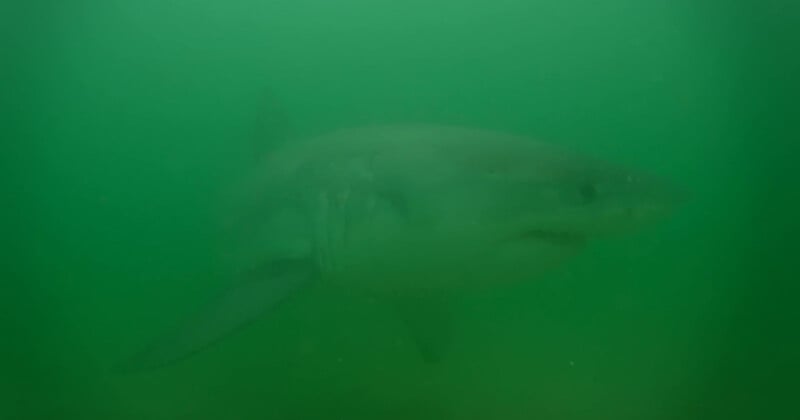
Although sharks are under significant threat worldwide, great white sharks are appearing in greater numbers around Cape Cod, Massachusetts, a popular tourist destination. In the new television special, “Return of the White Shark,” National Geographic takes a closer look at the shark population around Cape Cod.
In “Return of the White Shark,” much of the focus is on understanding why so many more sharks are being spotted in the waters of Massachusetts and learning more about their predation and behavior.
PetaPixel spoke with the producer of “Return of the White Shark,” renowned underwater photographer and diver Brian Skerry. Skerry is a photojournalist and film producer who has been a contract photographer for National Geographic Magazine since 1998, covering stories in nearly every ocean habitat. The award-winning photographer and filmmaker is also a Nikon Ambassador.
Cape Cod is Now a Shark Hotbed
While shark attacks, of which there have been five at Cape Cod in the last decade, prompt public panic and fear, it is important to understand that sharks are not malicious beasts hunting people. Per the National Oceanic and Atmospheric Administration (NOAA), sharks rarely attack people, and when they do, it is often the result of confusion or curiosity.
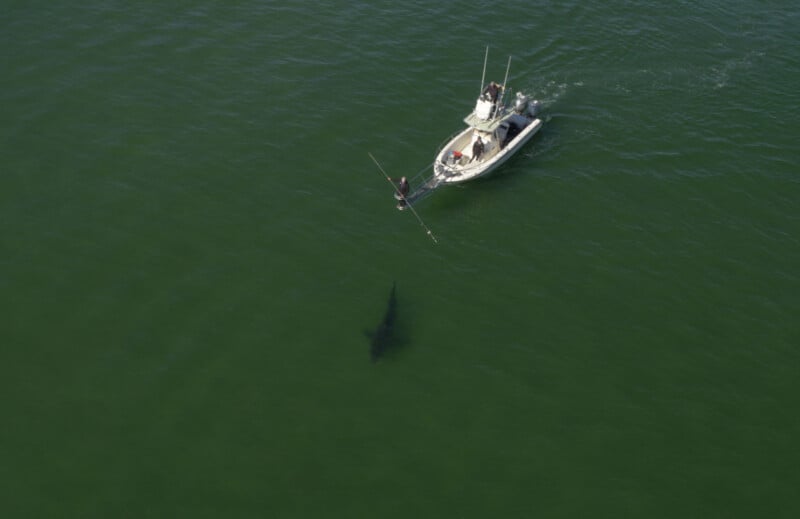
Despite the relative rarity of shark attacks, it is impossible to ignore that white shark sightings are rising along the Massachusetts coast and other areas throughout the eastern seaboard. With an increase in white shark populations, the risk of an attack increases. It is perilous because locals and tourists alike are not used to even considering the possibility of white sharks in Cape Cod’s coastal waters. People are being forced to rapidly adjust to a new normal, although arguably, it is a return to normal.
More Seals Means More Sharks
Skerry explains that it is not that suddenly there are many sharks around, even if it may feel like that to the people on Cape Cod.
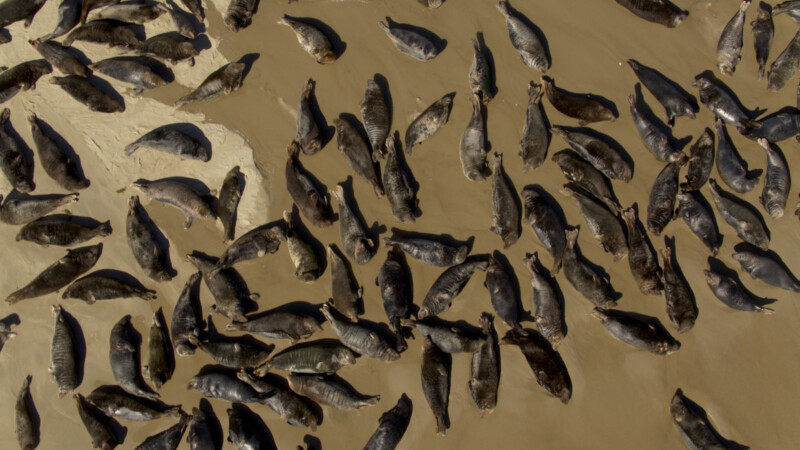
“If you go back a few hundred years ago, there would have been sharks and seals throughout this whole region, Cape Cod, Massachusetts, the whole New England area, would have had healthy populations of both of those animals,” Skerry says.
However, early seal hunters killed nearly all the seals. Fishermen back then, like fishermen today, blamed seals for eating all their fish, which is a preposterous claim.
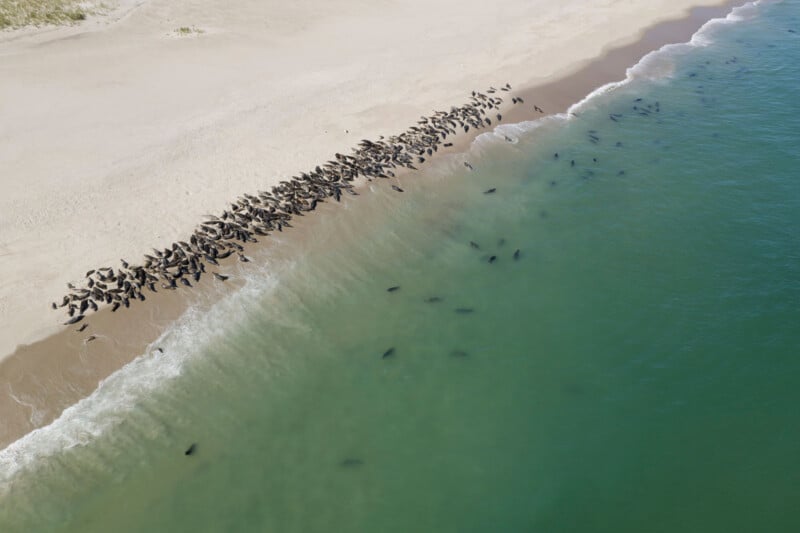
“They put a bounty on seals — it was perfectly legal to kill seals hundreds of years ago,” Skerry says.
That all changed in 1972 when the United States enacted the Marine Mammal Protection Act (MMPA). The MMPA prohibits the “taking” of marine mammals, which includes bans on hunting, killing, capturing, or harassing any marine mammal.
“Seals have inhabited Cape Cod for some 4,000 years, but for the past century or so, they’ve been scarce in this part of the world,” writes the NRDC. Between 1888 and 1962, it is estimated that fishermen in New England killed as many as 135,000 seals.
With people banned from slaughtering seals, the seal population has rebounded, and sharks have more food to eat.
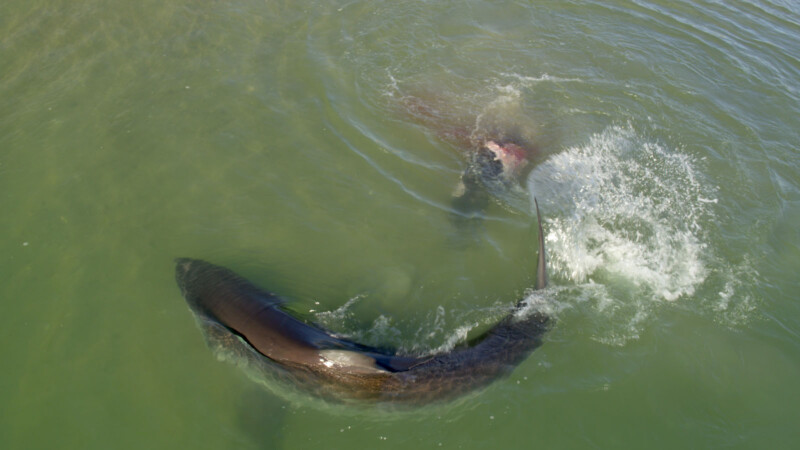
Decades following the MMPA’s introduction, Cape Cod now has “potentially the highest density of sharks in the world,” according to Megan Winton, a fisheries scientist featured in “Return of the White Shark.”
“We knew there were a lot more sharks out there, but this is the first time we’ve ever had a number for any portion of the species’ range in the North Atlantic, which is huge,” Winton explains.
Greg Skomal, a senior fisheries scientist with the Division of Marine Fisheries and a co-author with Winton on a forthcoming research paper, says, “You really can’t think of any other location where white sharks attempting to feed on seals overlap with human activity.”
There are as many as 50,000 gray seals in Massachusetts, and the seals are, somewhat predictably, yet again being blamed for eating too many fish.
As Skerry says, it is not so much that there is a new normal in Massachusetts with the recent increase in seal and shark populations but rather that the ecosystem is returning to its previous state.
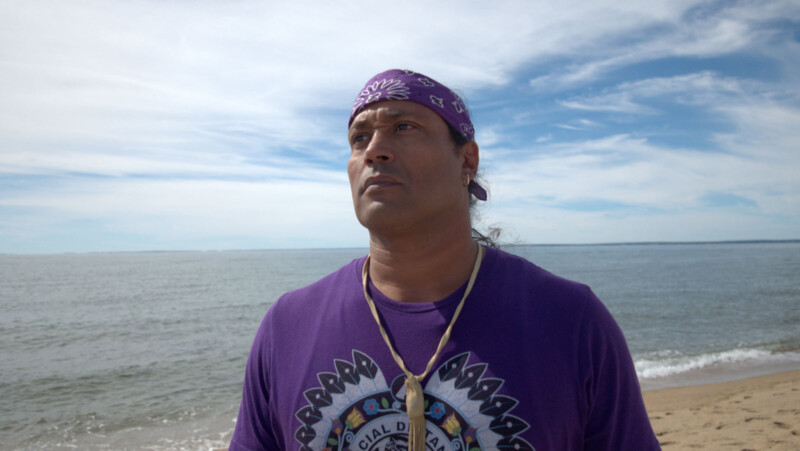
“In our film, we talk to a tribal leader — their history goes back 10,000 years or more in these lands, in Cape Cod. Their tribal stories and the science shows that there were sharks and seals long ago, and it was important to them to have those healthy ecosystems,” Skerry says.
Wampanoag tribal member David Weeden says that his tribe, which has ancient ties to Cape Cod, believes that everything there has a right to live and be respected, including the seals and sharks.
Not everyone agrees. Another interview with local fisherman Nick Muto demonstrates that some people think the seals on Cape Cod should be culled.
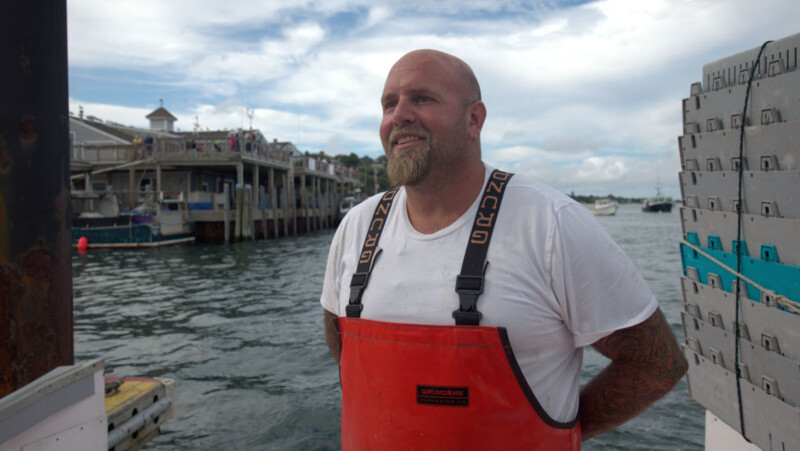
Safely Monitoring Shark Populations Benefits from Improved Technology
As shown in “Return of the White Shark,” Winton and other researchers from the Atlantic White Shark Conservancy use non-invasive methods for spotting sharks. The researchers utilize a spotter plane and radio locations to a research vessel, the Aleutian Dream.
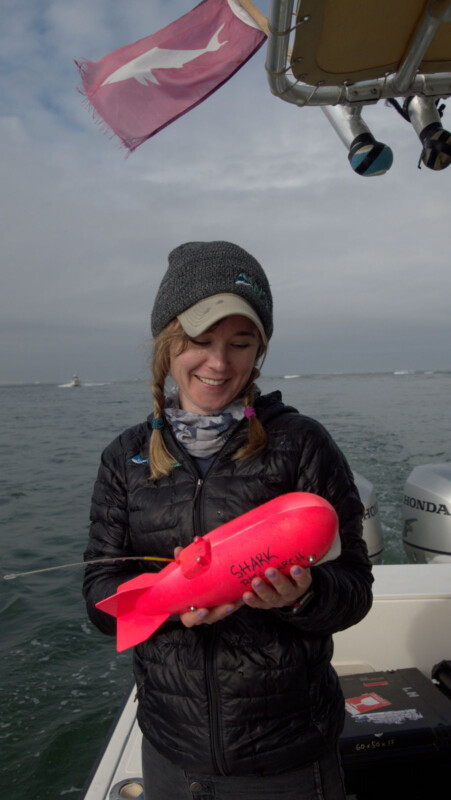
Once the vessel reaches the spotted sharks, underwater videos are shot using a GoPro attached to a fiberglass painter’s pole. The researchers have conducted nearly 150 survey trips, encountered sharks more than 2,000 times, and collected nearly 3,000 videos.
Despite sizable increases in the numbers of sharks observed around Cape Cod, it is not necessarily the case that the shark population itself is increasing — perhaps sharks have just moved in from elsewhere to gorge on the large seal population.
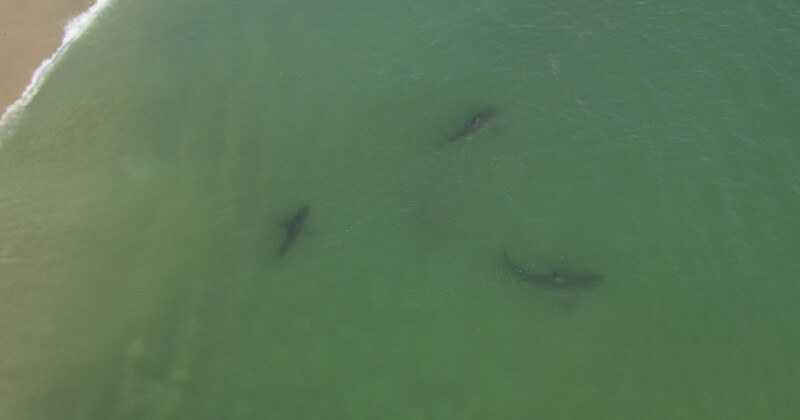
Skomal adds that research suggests a growing population of sharks, even if the increased sightings may not tell the entire story.
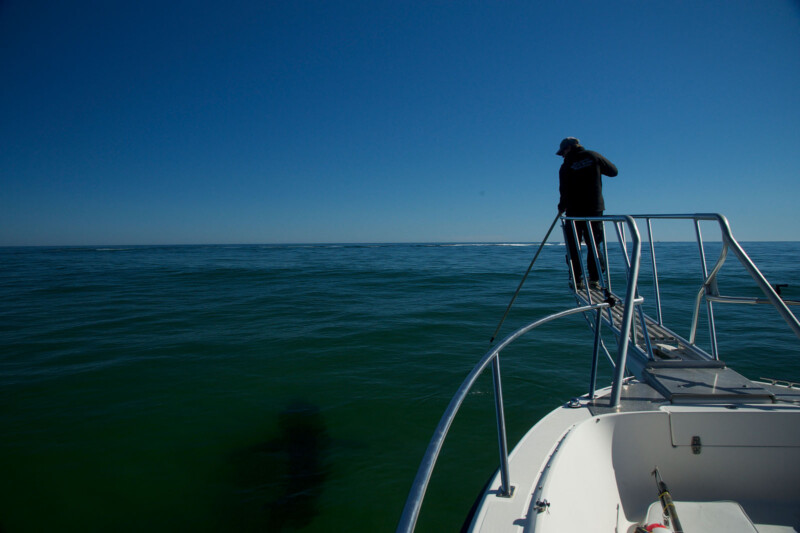
An excellent way to learn how much the shark population is growing would be to observe shark pups and breeding populations. However, despite extensive research, little is known about where and how white sharks breed.
While some shark researchers believe that great white sharks mate off the coast of the Carolinas, others think that many sharks are born near Long Island in New York. In any case, the location of where great white sharks are conceived and birthed is not settled science.
The Dangers of Sharks: Real versus Perceived Threats
In 2018, 26-year-old Arthur Medici went surfing off the coast of Cape Cod and succumbed to a fatal shark encounter. It was the first deadly shark attack in Massachusetts since 1936.
The attack came just weeks after a 61-year-old neurologist, William Lytton, was bitten by a shark off the coast of nearby Truro, Massachusetts. Lytton survived thanks to extraordinary life-saving measures by surgeons at Tufts Medical Center in Boston.
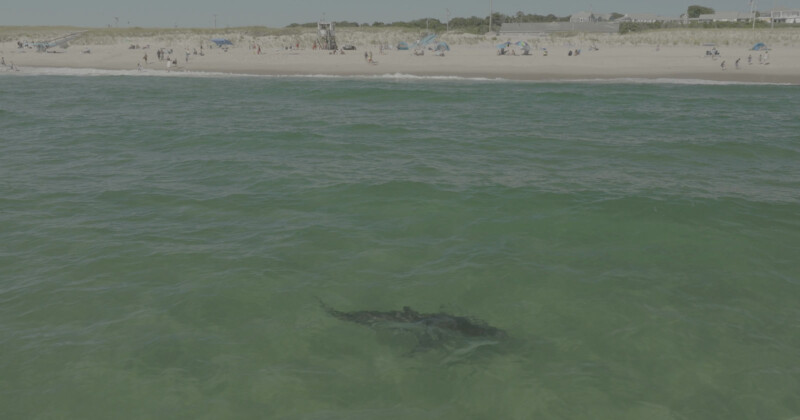
Alongside other non-fatal shark encounters, it is understandable that there is growing concern among residents and visitors alike. People are wondering if it is still safe to enter the ocean.
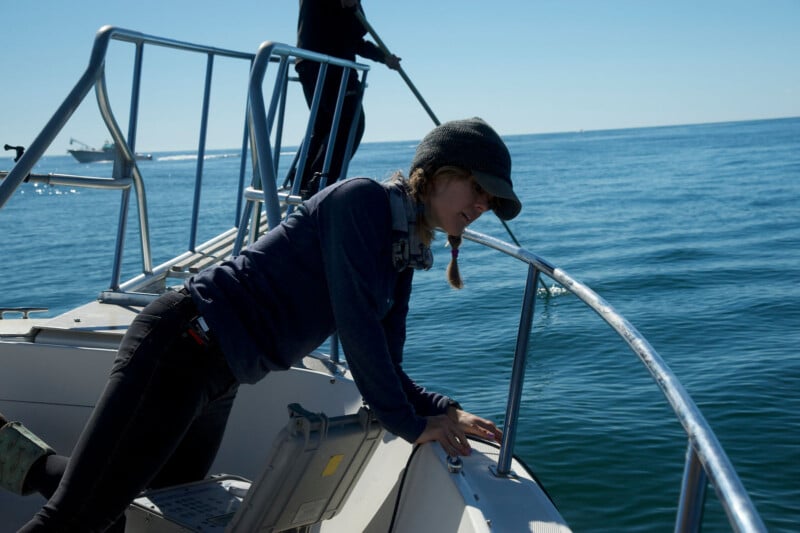
This concern is a major driving force behind Winton’s ongoing research. Sharks can be dangerous, but an increased understanding of shark behavior can significantly mitigate the risk of fatal shark encounters.
“We created a new model that allowed sharks to move into and out of the area and accounted for where individual sharks like to ‘hang out’ along the coast,” Winton explains.
The research has been aided significantly by improved underwater camera technology, enabling scientists to identify specific individuals better.
Shark encounters are more likely in Cape Cod because sharks prowl the area’s sandbar-lined coastline, waiting for seals in shallow water. White sharks are typically ambush hunters that stick to deep waters. However, in Massachusetts, the sharks are predating differently.
The white sharks studied by Winton and others spend about half their time in water 15 feet deep or shallower.
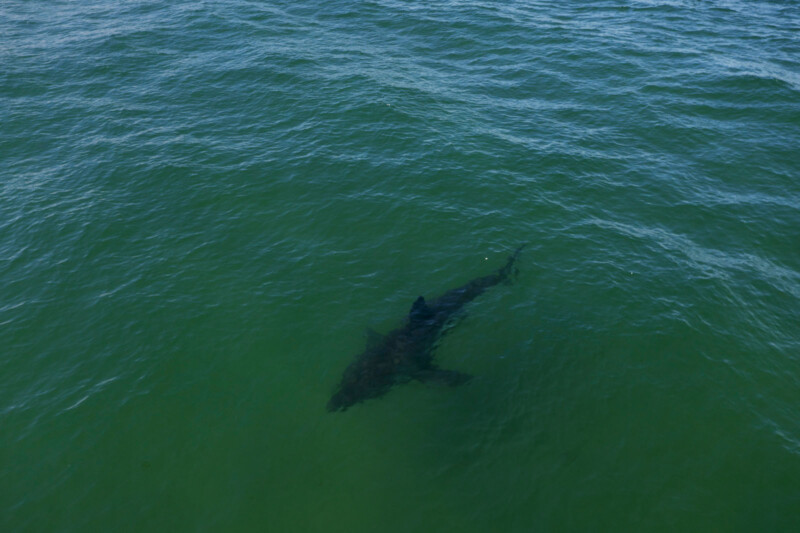
| Credit: National Geographic for Disney/Steve De Neef
“People might know that white sharks come here, but they think they’re far offshore,” Winton says. “We’ve seen sharks as big as 15 feet long in just four to five feet of water. And it’s incredible how camouflaged they can be. People might be right next to them and don’t even see them.”
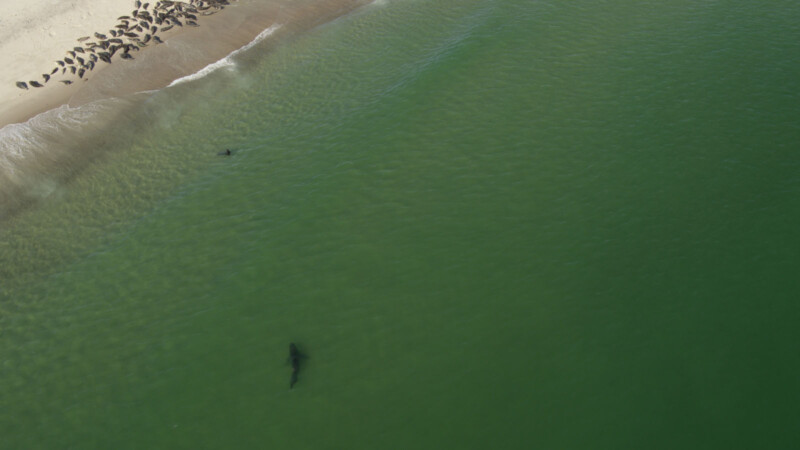
That said, sharks are not prowling shallow ocean water trying to find people to chomp on — they are in shallow water because that is where their prey of choice, gray seals, spend much of their time.
Because seal and human activity overlap, shark and human activity are likely to overlap. While swimmers are much more likely to drown than be bitten by a shark, people are more likely to encounter a shark in Cape Cod’s waters now than in recent decades.
“I used to dive Cape Cod in the 1970s, 80s, and 90s on shipwrecks and all kinds of things,” Skerry says. “I would never dive into those same places today — there are just so many sharks around.”
It is also essential to appreciate that a more robust understanding of shark behavior and movement, and the resulting decrease in human-shark interactions, is not just beneficial for beachgoers, it is a demonstrably improved outcome for the sharks as well.
“There is a lot of concern in a place like Cape Cod, where people like to go for recreation to the beach — there are a lot of big beaches there, where hundreds or even thousands of people like to go swimming, paddle boarding, kite surfing, kayaking, and so on, in our human lifetimes, for probably hundreds of years, nobody has had to worry about a shark. It wasn’t even on their radar. But in the last five, ten years, there have been five attacks on humans in those waters, including a fatal attack. So, this is something we need to be concerned about. There are many people who own businesses or have expensive homes on the beach, and they want to go swimming. We understand that. But if you take a broader look, this is an ecosystem that is being restored because of conservation,” Skerry tells PetaPixel.
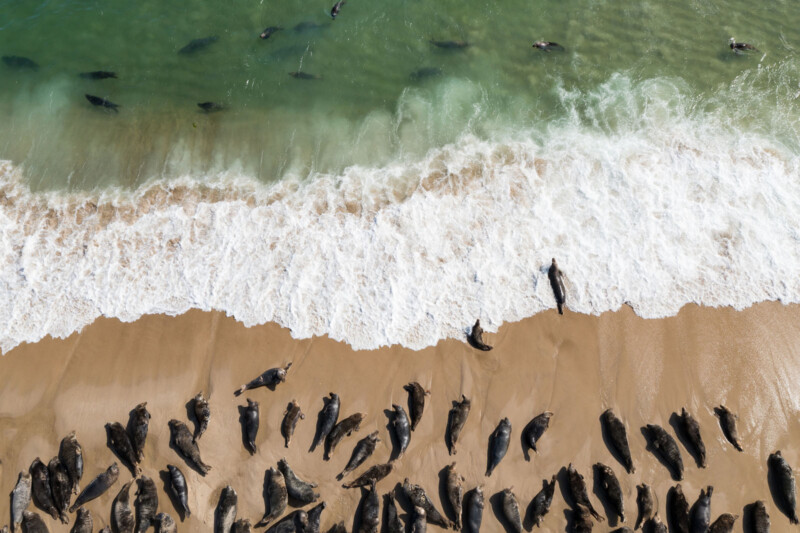
Skerry emphasizes how vital a healthy ocean is for all life, not just sea life. “Even though there are concerns, and rightfully so, I’m not downplaying the concerns, but I think it’s important to restore ocean ecosystems and make sure that animals are healthy and doing well. The kneejerk reaction to kill seals or sharks just because we don’t like them in our backyard — I don’t think we should do that. We should mitigate the encounters between humans and sharks, but we need to learn to coexist at some level,” Skerry adds.
“I think we should use science as best we can to understand these animals and their behaviors and then make decisions based on that science. I think that’s the best we can do,” he concludes.
Technology Has Also Changed Skerry’s Work
It is not just shark researchers who have benefited from huge leaps forward in camera technology. Brian Skerry tells PetaPixel that improved camera technology has completely revolutionized his work.
“It has been a night and day difference. I have been working as a National Geographic magazine photographer for 25 years — I think I am working on my 33rd story for the magazine, these are stories I propose about the ocean and wildlife. I switched to digital in 2005 or so, and prior to that, I’d go out on assignment and shoot 500 rolls of film and not even know what I had,” Skerry explains.
Back in the analog photography days, Skerry would need to send all his unprocessed film to National Geographic’s headquarters in Washington D.C. and wait nervously by the phone for weeks to hear back about his shots. It is so easy to take for granted the immediacy of digital photography, but even compared to the workflow for most film photographers, Skerry and other Nat Geo photographers had to endure an especially sluggish workflow.
“Now I know what I have before the photo editor does. That was a huge, monumental change. As a journalist, you can make decisions in the field if you’re in a remote location and there are certain pictures you want to make. Knowing whether you have the shot really helps,” Skerry says.
There are other critical benefits of the digital age, including improved sensor resolution, better autofocus systems, faster burst shooting, and expansive card capacity. After all, photographers cannot change film underwater, so being limited to 36 shots per dive was a limiting factor.
“Same with video cameras. Now that I’m creating these films and producing and directing them, I work with my drone pilots, and we can get cinematic-quality shots from drones. In some of these remote locations, you can’t even get a helicopter in the air or use planes if you wanted to, but now we can open a Pelican case, pull out a great drone, and launch it pretty much anywhere in the world,” Skerry explains.
For many shots, Skerry uses RED cameras, which have “tremendous dynamic range,” allowing for incredible motion pictures in very dark places.
He also uses remote cameras during his work, another technology that Skerry says has gotten a lot better in recent years.
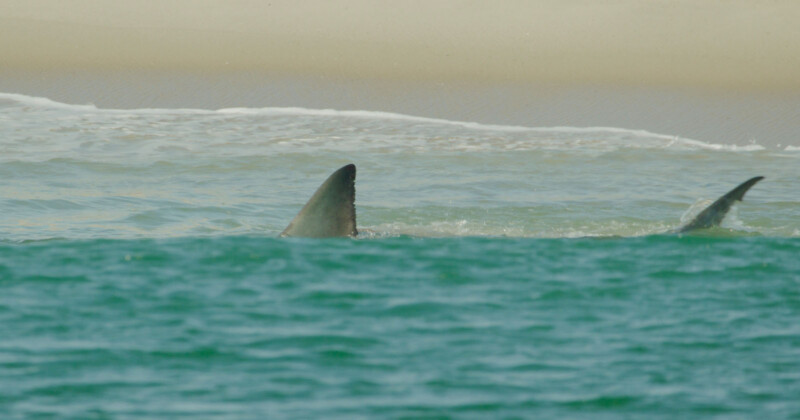
Video Through a Photographer’s Eye
PetaPixel asks Skerry how shooting video compares to capturing still photographs from technical, storytelling, and artistic perspectives.
“It’s a great question, and nobody has ever asked that, but I think about that all the time. As a still photographer — when I talk about my work or give lectures, I always say, ‘I made this picture’ or ‘I made that picture,” Skerry explains. “A lot of times, folks will ask me why I say, ‘made a picture’ instead of ‘took a picture.'”
“My answer is that it’s a conscious decision to say that because I think of it like a filmmaker makes a film. In my mind, if you’re taking a picture, it implies that you’re kind of randomly walking down the street and taking whatever you say. If you make a picture, you’re looking through the viewfinder, you’re thinking about the corners of the frame and where the light and subject are, and you’re thinking about the rule of thirds, negative space, and all those other things that go into making a great frame.”
“I’m very cognizant of those things in motion pictures. I trained in film and photojournalism in college, but most of my career has been in still photography. I see the value of both. These days, I’m not usually shooting the video; I’m hiring the directors of photography to do the camera work, but I’m often having in-depth conversations — no pun intended — about the kinds of shots I want. The people I’m hiring are really talented, and they understand beautiful shots and how motion is different. They’re probably better than I am at understanding the overall sequence of a frame. But I’m often showing a person a still frame I made and asking people to capture something like that to the best of their ability,” Skerry explains.
“It’s great that you asked that because it’s something I think about all the time. I see the world through still frames. I read a long time ago that even when we are watching a movie, we file away scenes as still frames. From what I’ve read, our brain doesn’t work in motion pictures, it works in still frames, and that’s how we remember things. With that in mind, I feel that still photography also has great value in understanding motion pictures. They’re two different mediums, but if you can create a scene that is a beautiful still frame, if it’s a nice picture, that will translate to the audience and tell an important story. It’s important to me.”
More from Brian Skerry
“Return of the White Shark” premiered on the National Geographic channel earlier this week and is also available on Disney+ and Hulu. The special will debut on Nat Geo Wild on July 25.
More of Brian Skerry’s work is available on his website, including beautiful still photography, motion pictures, and links to his National Geographic articles. Skerry is also on Instagram.
Image credits: All images not embedded from Instagram are still frames from “Return of the White Shark,” provided courtesy of Disney and National Geographic.